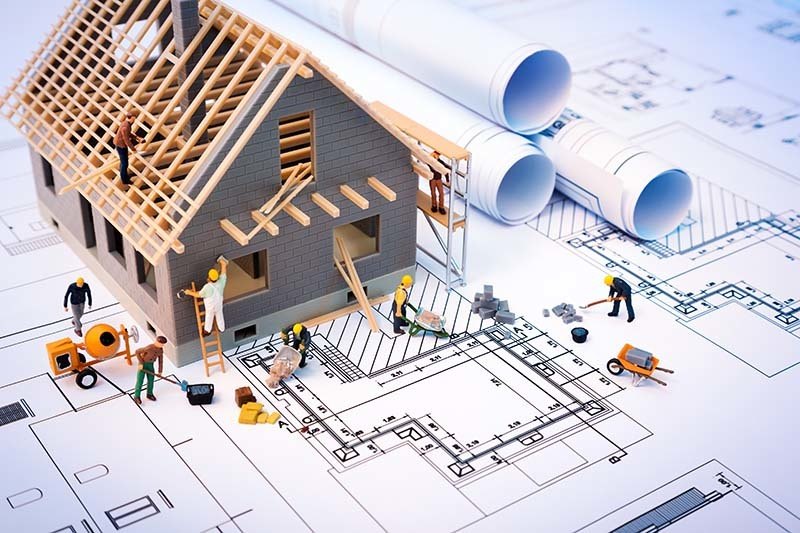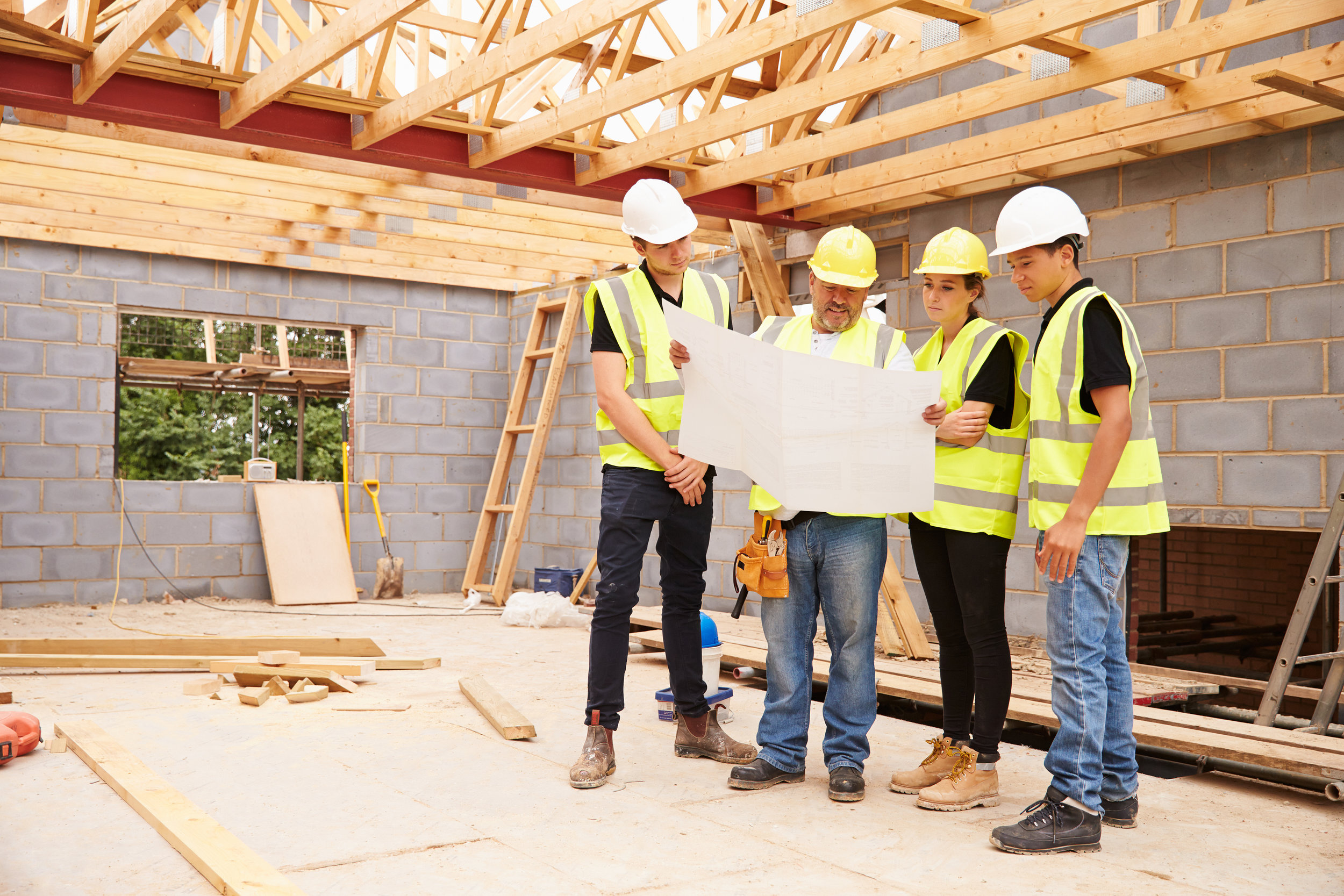General Contractor Indiana Offering Personalized Construction and Renovation Solutions
General Contractor Indiana Offering Personalized Construction and Renovation Solutions
Blog Article
How a General Contractor Can Change Your Common Areas Into Functional Rooms
The makeover of common locations right into practical areas is a nuanced process that needs a general service provider's competence in evaluating particular area demands and creating customized services. By considering factors such as design, access, and aesthetic allure, a service provider can develop environments that not just offer practical purposes however also foster area engagement. Via reliable job management and adherence to top quality requirements, these restorations can dramatically improve customer experience. Yet, the complexities associated with balancing style and capability increase important questions concerning best techniques and prospective challenges that benefit further exploration.
Assessing Current Common Location Needs
When assessing typical locations, it is necessary to determine and understand the particular needs of the area they serve. This procedure starts with a detailed analysis of existing usage patterns, which entails event information walking website traffic, peak use times, and activities occurring within these spaces. Engaging with neighborhood participants through meetings or surveys can provide useful insights right into their preferences and obstacles.
Following, it is important to think about the demographic structure of the neighborhood, including age, way of life, and any type of special needs that may affect how these spaces are used. For circumstances, family members with kids might call for play areas, while older adults may prioritize ease of access functions.
Furthermore, reviewing the existing framework and features is vital. Identifying areas that are underutilized or in need of fixing can educate prospective improvements. Teaming up with stakeholders, such as residential or commercial property supervisors and neighborhood organizations, guarantees that the assessment mirrors a detailed understanding of the community's needs.
Ultimately, a thorough examination of current usual location needs prepares for effective makeovers, permitting the creation of areas that foster interaction and boost the total quality of life within the neighborhood.
Designing for Capability and Appearance
An extensive understanding of area needs establishes the stage for efficient layout that stabilizes functionality and appearances alike locations. Effective design needs a thoughtful technique that thinks about both the sensible uses the room and the aesthetic allure that enhances the environment.
Functional design entails creating areas that satisfy the details tasks and communications of the area. This may include versatile seating plans for events, obtainable pathways for people with movement difficulties, or assigned locations for leisure activities. Each component needs to offer a purpose while ensuring ease of activity and convenience for customers.
Visual appeals play a vital duty in fostering an inviting atmosphere. The choice of colors, products, and lights can considerably influence the perception of an area. Incorporating natural environments, such as plant or water features, can boost the ambiance and develop a comforting atmosphere. In addition, straightening the layout with the area's social identity can promote a sense of belonging and pride.
Budgeting and Source Allocation
Effective budgeting and resource allotment are essential components in the effective improvement of common locations. A distinct budget plan describes the monetary parameters within which the job must operate, making sure that prices are managed and resources are properly utilized. This starts with a comprehensive assessment of task visit the website needs, including layout components, materials, and labor.

A basic contractor plays an essential role in this stage, working together with stakeholders to develop reasonable budget price quotes that straighten with the intended vision. By prioritizing crucial attributes and checking out cost-efficient alternatives, the service provider can maximize costs without jeopardizing quality.
Source allowance requires purposefully designating employees, devices, and materials to different stages of the project (Kitchen Remodeling Indiana). This requires cautious planning to stay clear of delays and make certain that each component is provided promptly. Additionally, routine tracking of expenses against the budget plan assists to identify prospective overruns early, enabling timely changes
Managing Building And Construction Process Effectively
Handling the building and construction procedure successfully is important for attaining prompt project completion and maintaining budget integrity. A well-coordinated technique includes careful preparation, clear interaction, and effective resource administration. General specialists need to establish an in-depth job timeline that details each stage of building, permitting the recognition of potential bottlenecks and critical landmarks.
Routine progression conferences are essential for maintaining all stakeholders notified and aligned. These meetings facilitate the prompt resolution of concerns, making sure that the project remains on track. Additionally, making use of job management software program can simplify interaction, track development, and manage documents, decreasing the likelihood of delays and misconceptions.
Efficient resource allocation is additionally critical. By ensuring that products, labor, and devices are offered when needed, basic service providers can avoid expensive interruptions. Applying an aggressive strategy to run the risk of management more enhances performance, as it allows for the recognition and mitigation of possible challenges prior to they escalate.

Ensuring Compliance and Quality Specifications
Conformity and quality requirements are fundamental to the success of any kind of construction job, making certain that the finished areas find out here now not just meet customer assumptions but additionally stick to governing requirements. A general specialist plays an essential role in imposing these criteria throughout the building and construction process.
First, it is necessary for the specialist to remain upgraded on local building regulations, safety guidelines, and sector ideal practices. This knowledge allows them to guide layout selections and material selections that line up with conformity standards. Regular inspections and quality assessments during the building stage assistance to identify potential issues early, reducing costly delays and remodel.
Additionally, a reliable general professional fosters a society of high quality amongst subcontractors and workers. This can be achieved by offering training on compliance their website protocols and executing strict quality assurance steps. By establishing clear communication networks, the professional can make sure that everybody involved understands their duties concerning compliance and top quality.
Verdict
In final thought, the role of a basic specialist in transforming common locations into functional spaces is crucial. With an extensive assessment of community needs, thoughtful layout, careful budgeting, and effective project monitoring, these specialists can produce environments that boost usability and visual allure. Adherence to compliance and top quality requirements further ensures that revitalized areas not only satisfy the expectations of stakeholders however additionally foster interaction and enrich the general experience for all users within the neighborhood.
The makeover of usual areas right into functional areas is a nuanced process that calls for a general service provider's know-how in evaluating details neighborhood demands and developing customized solutions. By thinking about factors such as design, accessibility, and aesthetic charm, a professional can develop environments that not only offer practical functions however also foster community involvement. General contractors have to develop a comprehensive job timeline that details each phase of building, enabling for the recognition of critical milestones and possible bottlenecks.

Report this page